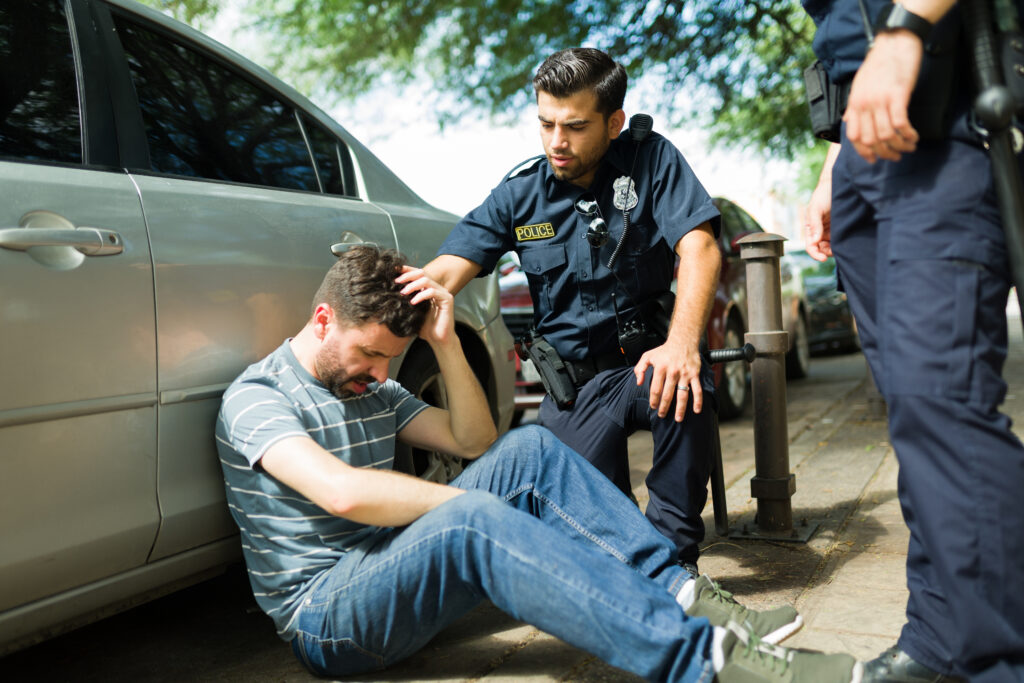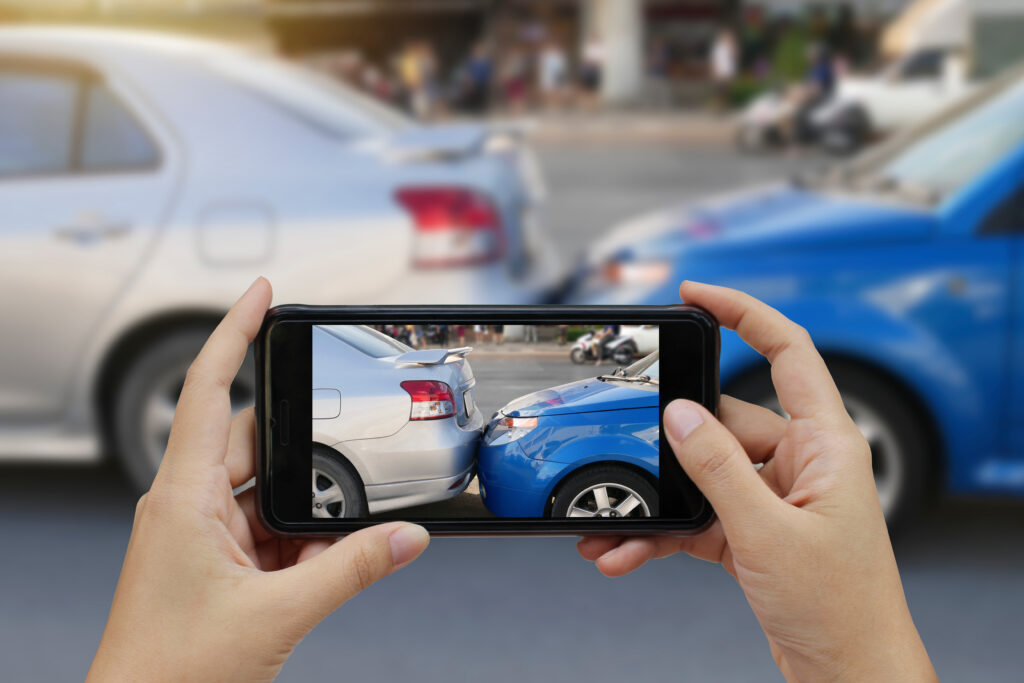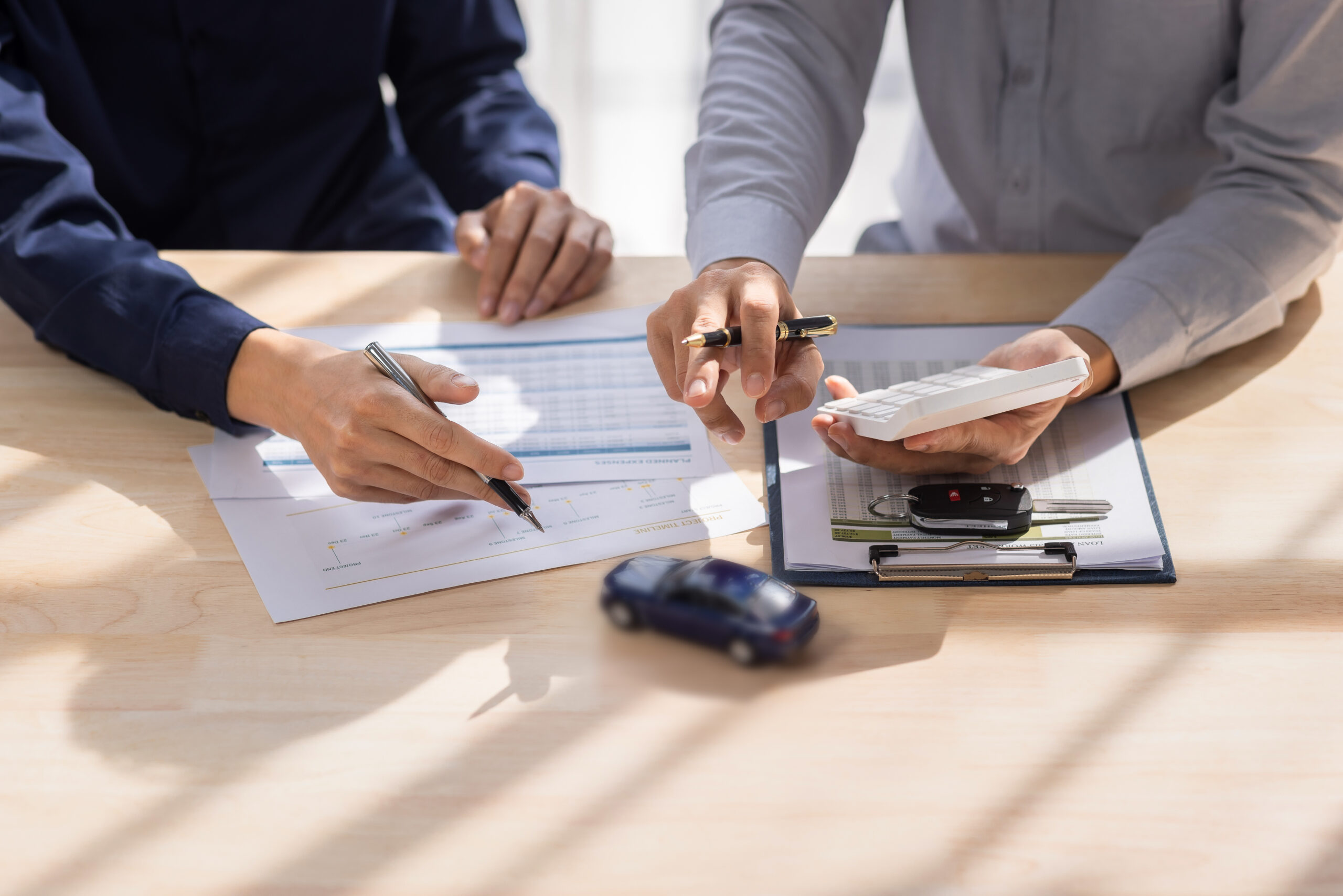Imagine you’re cruising down the scenic highways of New Mexico, basking in the beauty of the desert landscape when – out of nowhere – another car smashes into yours. As panic sets in and adrenaline spikes, it can be difficult to remember what to do next. But fear not! Being prepared for these situations is crucial to protecting your legal rights after an accident. In this step-by-step guide, we’ll teach you how to properly document a car accident in New Mexico so you can remain calm, organized and in control when life takes an unexpected turn.
After a car accident in New Mexico, it is important to take several steps to properly document the incident. This includes exchanging information with other drivers involved, obtaining a police report, taking photos of the scene of the accident and any damages or injuries sustained, and seeking medical attention if needed. It is also recommended to contact a personal injury attorney who can assist with the documentation and legal processes.
Reporting and How to Document a Car Accident in New Mexico
Car accidents can be a shocking and overwhelming experience, but it is crucial to report the accident to the appropriate parties in order to ensure your safety and protect your legal rights. In New Mexico, there are specific steps that must be taken when reporting a car accident.
The first thing you should do after a car accident is check for any injuries and ensure that everyone involved is safe and has medical attention if needed. Then, you must report the accident to the police and your insurance company as soon as feasible.
Some people might think that they can avoid reporting a car accident if it appears minor or if the other party agrees not to. However, failing to report a car accident could result in severe legal consequences later on.
Now that we have established the importance of reporting a car accident let’s dive into when you should contact law enforcement.
- Reporting a car accident is crucial to ensure safety and protect legal rights. In New Mexico, it is required to report the accident to the police and insurance company. Failing to do so could result in severe legal consequences. It is important to contact law enforcement immediately after an accident, regardless of how minor it may see.

When to Contact Law Enforcement
In New Mexico, it is required under state law for drivers to report all traffic accidents immediately by contacting local law enforcement. Any driver or occupant who suffers an injury in an accident must also report it immediately to law enforcement.
Let’s say that, following our previous example, you decide not to call the police because both cars appear only slightly damaged. This could happen especially if you think that no one was hurt in the process. However, soon after the incident, you start experiencing neck pain and headache- signs of whiplash.
Without a police report being made at the scene of an accident, there is no official documentation of what occurred. This lack of evidence could potentially create problems if you later need to file an insurance claim or pursue legal action.
Some people might feel that calling the police to report a minor accident is unnecessary and may waste law enforcement resources. However, it is important to remember that even small accidents have hidden damages that may show up over time.
It is clear from this discussion that contacting law enforcement is a necessary step when involved in a car accident, but how do you go about obtaining a police report?
Obtaining a Police Report
When involved in a car accident, obtaining a police report is crucial. Not only does it provide important details about the accident, but it also serves as official documentation of the incident. To obtain a police report, you will need to contact the law enforcement agency that responded to the scene of the accident.
Let me tell you about a client of mine who was involved in a car accident where the other driver was clearly at fault. My client called the police immediately, and they arrived promptly on the scene. The officer took statements from both drivers and any witnesses, assessed damage to both vehicles, and made sure everyone was okay. The police report provided critical information that was later used to support my client’s case with the insurance company and in court.
By contacting law enforcement immediately after an accident, you increase your chances of obtaining an accurate police report. Waiting too long or not reporting the accident at all could result in missing or incomplete information in the report. It is also important to note that New Mexico law requires drivers to report an accident if it results in death, injury, or property damage above $500.
Now that we have covered how to obtain a police report, let’s move on to the next important step – collecting and documenting evidence.

Collecting and Documenting Evidence
Collecting and documenting evidence is vital for supporting your case during negotiations with insurance companies and in court. The goal is to gather as much accurate information as possible about the circumstances surrounding the accident.
Take pictures of everything! Photographs can be some of your strongest evidence. Take pictures of the scene from different angles, including skid marks or debris in the roadway. If possible, take pictures before any vehicles are moved. These pictures will help show what happened and help establish liability.
Along with photographs, gather names and contact information from witnesses, if there were any. Witness testimony can bolster your case. Write down the make and models of all vehicles involved, including license plate numbers, insurance providers and policy numbers. If you have a smartphone or notepad, you may also want to take notes about the time of day, weather conditions and other details that could be pertinent.
Insurance companies often try to minimize their liability by arguing that the damages in your claim aren’t related to the accident, or that the accident was partly your fault. Collecting accurate evidence helps you establish what really happened at the scene of the accident. By documenting as much information as possible right away, you’re in a much stronger position to argue your side of the case during negotiations with insurance companies.
Now that we’ve covered collecting and documenting evidence, it’s time to move on to our next section – exchanging information with other parties involved in the accident.
- According to the New Mexico Department of Transportation, there were 40,294 reported motor vehicle crashes within the state in 2020.
- In New Mexico, the chance of being involved in a car accident is approximately 1 in 52, as reported by the National Highway Traffic Safety Administration (NHTSA) in 2019.
- A study conducted by the University of Texas at Austin revealed that thorough documentation of car accidents can help individuals recover up to 40% more compensation when compared to those with minimal or no documentation during personal injury claims.
Photos, Witness Statements, and Other Important Details
When documenting a car accident in New Mexico, one of the most important steps is to collect and document evidence. This includes taking pictures of the scene of the accident, obtaining witness statements, and noting any other important details.
For instance, take photos of the entire scene from different angles including the damages to your car and any other vehicles involved. Also, look out for tire treads on the roads that could be helpful in recreating the scene of an accident. Any marks on the road or nearby structures or trees could help determine how the accident occurred.
Witness statements can also be crucial pieces of evidence, so make sure to get contact information from anyone who may have witnessed the accident. Encourage them to provide a detailed account of what they saw and heard. Additionally, record your own recollection of events as soon as possible after the accident while it is still fresh in mind.
While collecting evidence, it’s essential to keep in mind that not all evidence will be admissible in court. For example, if you or anyone else moved your car or anything else after the accident before taking photos or documenting anything, this can result in losing evidentiary value and affecting your claims outcomes.
With that said, collecting accurate and thorough evidence can significantly improve your compensation options.

Exchanging Information with Involved Parties
Obtaining full information about everyone involved in an accident is another important step when documenting a car accident in New Mexico. This information should include names, addresses, phone numbers, insurance companies and policy numbers.
If there are injuries from an accident, then exchange details about medical attention received by each party involved. Anything that could affect future treatment plans needs to be documented as well.
Ensure you closely examine any documents handed to you by law enforcement personnel and get a copy of them before leaving the scene.
Moreover, seek clarification on any unfamiliar legal terms in the documents provided. This can be essential when dealing with insurance companies and seeking compensation for damages incurred.
It’s understandable to feel overwhelmed after being involved in an accident, especially if there were injuries. Therefore, it’s important to seek help from professionals such as a personal injury lawyer who is experienced in handling similar cases.
In the same way, you would consult a doctor for a physical injury, ensure you speak to a legal expert who can advise you on every step of the legal process.
With this information, victims of car accidents can make an informed decision on how to manage insurance claims and navigate other legal requirements.
Navigating Insurance Claims and Legal Requirements
After you’ve reported the accident to the police, collected all necessary evidence, and exchanged information with involved parties, it’s time to navigate the insurance claims and legal requirements process. This step can often be overwhelming and confusing, especially if you’ve never been involved in a car accident before. However, by understanding the process and seeking help from professionals when needed, you can ensure a smoother outcome.
When it comes to navigating insurance claims, there are a few important things to keep in mind. First and foremost, it’s important to understand your own insurance policy. Make sure you review your policy before getting into an accident so that you understand the types of coverage you have and the limits of your policy. Additionally, be sure to document everything related to your accident as well as any communication with insurance companies. This documentation can be vital later on should any disputes arise during the claims process.
Depending on the circumstances of your accident, you may need to file a claim with either your own insurance company or the other driver’s insurance company (or both). Once you’ve submitted a claim, an adjuster will likely be assigned to investigate the claim and determine fault. It’s important to note that insurance adjusters are trained to minimize payouts, so don’t hesitate to seek legal advice if you feel like your adjuster isn’t representing your best interests.
If another driver was at fault for your accident, his or her insurance will typically cover damages related to the accident such as medical bills or car repairs. If the other driver’s policy limit isn’t high enough to cover all expenses, you can sometimes also file against your own insurance policy depending on the type of coverage you have. However, this can be a complicated process and it’s always best to consult with an experienced personal injury attorney before proceeding.
In some cases, it may be necessary to take legal action to recover fair compensation for your damages. However, this can be a long and complicated process, and there’s always the risk of losing your case. It’s important to carefully consider all options before deciding whether or not to pursue litigation. A skilled attorney can help you decide whether or not the potential benefits outweigh the risks.
Think of navigating insurance claims and legal requirements like driving through a rainstorm without windshield wipers. You might still be able to make it to your destination, but you’re likely to encounter a lot of obstacles along the way. By having the right tools (such as an experienced personal injury attorney) and proceeding with caution, you’ll increase your chances of reaching a successful outcome.
Overall, navigating insurance claims and legal requirements after a car accident in New Mexico can be a complex process. However, by staying organized, documenting everything related to your accident, seeking professional advice when needed, and proceeding with caution, you can increase your chances of recovering fair compensation for your damages. Remember that each case is unique and that seeking personalized legal advice is always recommended.
Frequently Asked Questions
Are there any legal requirements for documenting a car accident in New Mexico?
Yes, there are legal requirements for documenting a car accident in New Mexico. According to the New Mexico Department of Transportation, all drivers involved in an accident where there is property damage or bodily injury must exchange information such as names, addresses, phone numbers, insurance information and driver’s license numbers. Also, drivers must file an accident report with the New Mexico Motor Vehicle Division (MVD) within five days if the damages were over $500 or if someone was injured or killed.
Additionally, taking photos of the accident scene can provide valuable evidence in case of legal disputes or insurance claims. In fact, according to a study by the National Association of Insurance Commissioners, photographs and videos taken after a car accident are one of the most important pieces of documentation for settling claims.
Therefore, it’s crucial to properly document any car accident in New Mexico that you’re involved in. This can help you protect your rights and ensure that you have appropriate legal recourse in case of any issues that may arise as a result of the collision.
Are there any common mistakes that people make when documenting a car accident in New Mexico?
Yes, there are several common mistakes that people make when documenting a car accident in New Mexico. According to a report by the New Mexico Department of Transportation, the number one mistake people make is not calling the police or reporting the accident to the authorities. This can lead to serious consequences such as legal issues and insurance problems.
Another common mistake is not taking enough photographs of the accident scene and the damage caused by the collision. Having adequate visual documentation of the accident scene and damages can help you with your insurance claims, especially if you were not at fault.
Additionally, many people fail to gather contact information from witnesses who may have seen the accident. Witness accounts can be crucial in determining fault and liability in an accident. Finally, it is important to avoid admitting fault or apologizing for anything at the scene before consulting with a lawyer or insurance representative.
In conclusion, documenting a car accident in New Mexico requires attention to detail and careful execution, and avoiding these common mistakes can help protect your rights and interests in case of an accident.
How can photographs be used to document a car accident in New Mexico?
Photographs can play a crucial role in documenting a car accident in New Mexico. They provide an objective visual record of the damage to vehicles and any injuries sustained by occupants, which can be used as evidence in legal proceedings.
In fact, according to a report by the National Highway Traffic Safety Administration, photographs are among the most important types of evidence that can be presented in a car accident case. The report found that photographic evidence was introduced in over 94% of cases where it was available, and was considered the most persuasive type of evidence by judges and juries.
When taking photographs at the scene of a car accident in New Mexico, it’s important to capture a variety of angles and perspectives. Shots should include images of all vehicles involved, as well as any skid marks or debris on the road. It’s also important to take close-up photos of any damage to each vehicle, including dents, scratches, and broken glass.
Additionally, photographs may be used to document any physical injuries sustained by drivers or passengers involved in the accident. Photos of cuts, bruises, burns or other injuries may support claims for medical expenses and other damages.
Overall, a detailed photographic record can greatly improve your chances of successfully claiming damages following a car accident in New Mexico. By following these tips and taking plenty of high-quality pictures, motorists can protect themselves and ensure they receive fair compensation for any losses suffered.
What steps should be taken immediately after a car accident to ensure proper documentation?
After a car accident in New Mexico, there are several steps you should take to ensure proper documentation of the incident. First and foremost, check yourself and others involved in the accident for injuries and administer first aid if necessary.
Once everyone is safe, call 911 to report the accident. This will ensure that a police officer and medical professionals arrive at the scene to provide assistance and make an official report of the incident.
While waiting for the police to arrive, exchange information with the other driver(s) involved in the accident. Be sure to collect their name, contact information, insurance company and policy information, and license plate number.
It is also important to document the scene of the accident by taking photos of any damage to vehicles or property involved. Additionally, gather contact information from any witnesses who saw what happened.
According to data from New Mexico’s Department of Transportation, in 2019 alone there were more than 43,000 reported motor vehicle crashes in the state. Proper documentation can help protect you legally and ensure that insurance claims are processed correctly.
In summary, after being involved in a car accident in New Mexico you should: check yourself and others for injuries, call 911, exchange information with other drivers involved, document the scene through photos and witness testimony. Remembering these steps can help preserve crucial evidence that can be used later on if needed.
What specific information should be documented after a car accident in New Mexico?
After a car accident in New Mexico, it is crucial to document specific information to help with your insurance claim or any legal proceedings that may follow. Here are some essential pieces of information that you should document:
1. The full names and contact information of all involved parties: This includes the names, phone numbers, and addresses of all drivers, passengers, and witnesses involved in the accident.
2. Details about the vehicles: Write down the make, model, year, and license plate number of each vehicle involved in the accident.
3. Location: Take note of where the accident took place, including street names or landmarks.
4. Date and time: Write down the exact date and time when the accident occurred.
5. Photos of the scene: It’s important to take photos of both vehicles from different angles and any damage that was caused during the collision.
6. Police report number: If law enforcement responded to the scene, write down the police report number.
According to data from the New Mexico Traffic Safety Bureau, there were 19,257 reported car accidents in 2019 alone. Taking detailed notes of a car accident will ensure you have all necessary information readily available during a stressful situation. In addition, prompt documentation can help expedite an insurance claim which might lead to a quicker car repair process.
Therefore documenting comprehensive information after an accident is imperative for anyone who wishes to take legal or insurance-related action later on.
Get Help
If you have been the victim of an accident or injury, it is important to seek legal counsel as soon as possible. The attorneys at Ornelas and Serna are experienced in helping individuals with a variety of legal issues, including personal injury.
Our team of attorneys have years of experience representing clients in court and have a strong track record of success. We understand the complexities of personal injury cases and know how to navigate the legal system to get the best possible outcome for our clients.
We are highly experienced in the legal field and understand the complexities of the law. We have a team of highly qualified attorneys who specialize in various areas of law.
Our attorneys are well-versed in the complexities of the legal system and have a wealth of experience in the courtroom. We understand the importance of providing our clients with the best legal representation possible and are committed to providing the highest quality of service.

